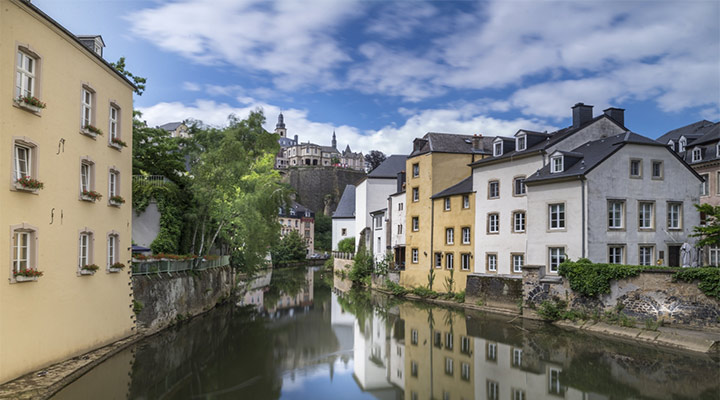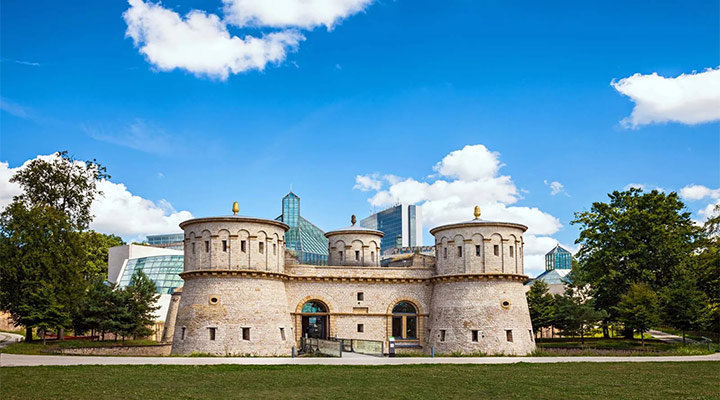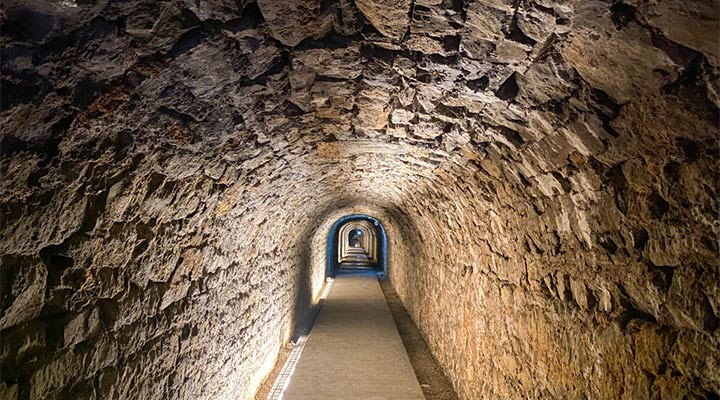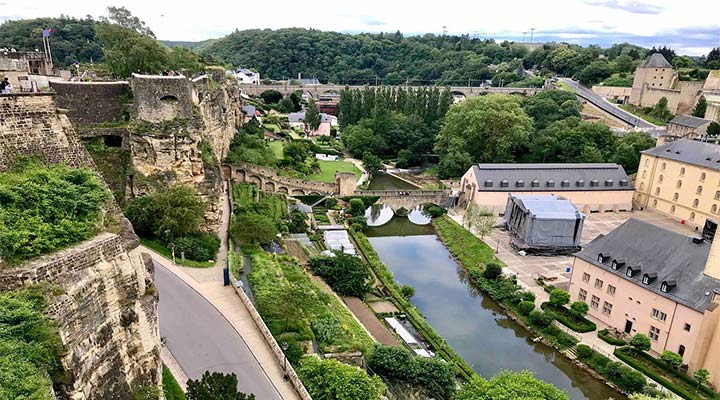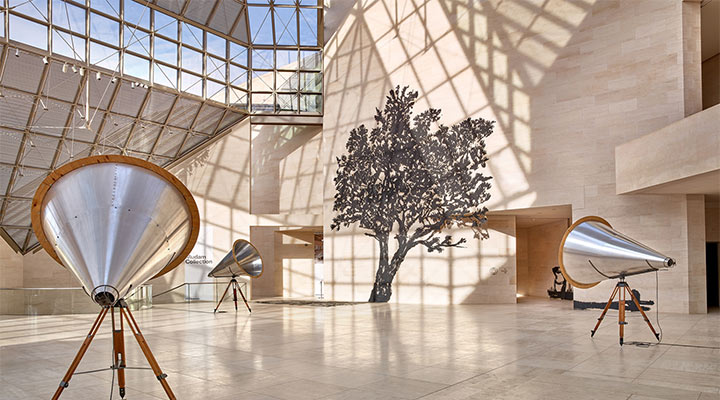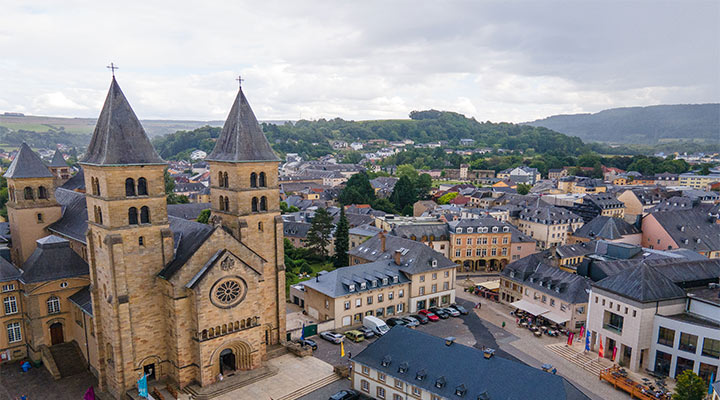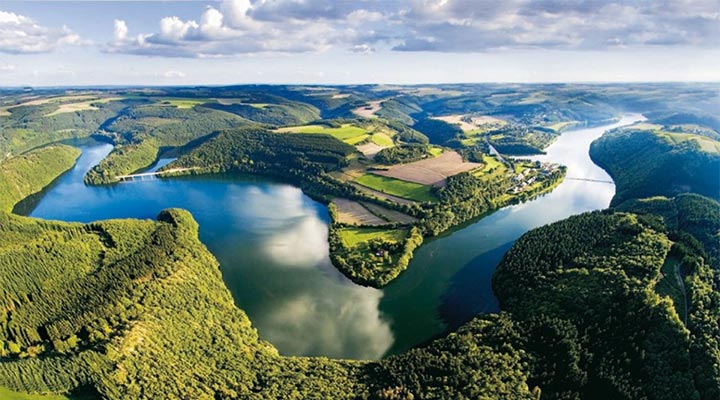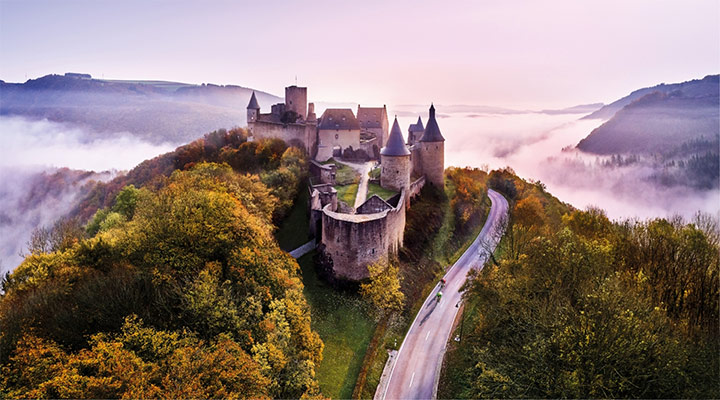Where is Luxembourg? Introducing its ten unique attractions

Luxembourg is a small, charming, and beautiful country famous for its enchanting natural scenery, unique architecture, and rich history. Travelling through this beautiful country, you will discover a treasure trove of architectural wonders, from medieval castles to modern marvels. In Luxembourg, you can touch history and modernity side by side, immerse yourself in the captivating beauty of the Ardennes forests, walk in the spectacular valleys of the Moselle region, or walk the cobbled streets of the country’s quaint villages and meet people from all over the world in its cafes. If you’re into adventure, find Luxembourg and prepare for a fantastic trip!
Introducing the country of Luxembourg
Luxembourg is located in northwestern Europe and is one of the smallest countries in the world. The land surrounds this country and is situated among the nations of Belgium, France, and Germany. The area of this country is 2,586 square kilometres, and its population reached 656,000 in 2023. Luxembourg’s climate is mild and rainy. The northern regions of this country are a little colder and wetter compared to the south.
Luxembourgish (Lëtzebuergesch), considered the language of the native inhabitants of this country, is a dialect of the German language reinforced with French expressions. Therefore, French and German languages are also prevalent in this country.
The currency of Luxembourg is the euro, but the Luxembourg and Belgian francs are also used in the country. Most of Luxembourg’s citizens are Catholics, and Protestants, Jews, and Muslims are religious minorities.
The political structure of Luxembourg
Although Luxembourg has not always been an independent country, it has had a separate government since the 10th century. Luxembourg’s political structure is as fascinating as its culture and history and has a rich history. Politically, Luxembourg is a constitutional monarchy with a parliamentary democracy. The Grand Duke or duchess of the royal family is the ceremonial head of government, and the prime minister runs the government.
Renowned for its unfaltering political stability and steadfast policy of maintaining neutrality, Luxembourg is home to several prominent European institutions, such as the European Court of Justice and the European Investment Bank.
The Royal Family of Luxembourg
The royal family of Luxembourg, called the Grand Ducal Family, plays a vital role in this country’s political and cultural landscape. The royal family is headed by Prince Henry, nicknamed the Grand Duke, who ascended the throne in 2000. Henry is the eldest son of Duke Jean and Princess Josephine Charlotte of Belgium. Duke Henry is also an official cousin of Philippe, King of Belgium. Belgium, Luxembourg, and the Netherlands were once a single kingdom.
Although the Ducal family does not have executive power in the government structure, they act as representatives of the country both domestically and internationally. Participating in government trips, welcoming foreign officials, and official ceremonies and events are among their activities. Another important task of the Grand Duke and Duchess is to strengthen diplomatic relations as ambassadors of Luxembourg.
The cultural structure of Luxembourg
The history and culture of Luxembourg are deeply intertwined with those of its surrounding countries. This country has witnessed the rise and fall of different empires, and its strategic location has made it a valuable land over the centuries. As a result, the culture of Luxembourg is influenced by the culture of France, Germany, and Belgium. This cultural intermingling has also shown itself in the common languages of this country. Luxembourgers are known for being multilingual, appreciating the arts, and believing in freedom of expression.
This country’s capital is Luxembourg, which UNESCO has registered as a world heritage. This beautiful city has a harmonious combination of contemporary and ancient architectural structures. After the end of World War II, Luxembourg played an essential role in the creation of the European Union and was one of its founding members.
Introducing the tourist attractions of Luxembourg
Although Luxembourg is a small and sparsely populated country with many tourist attractions, many tourist areas are in or near Luxembourg City. This country’s small towns and villages are also beautiful and spectacular; visiting them will be a unique and memorable experience. In the following, we will introduce you to some of the tourist attractions of this extraordinary country.
1. The old quarter of Luxembourg City
There is no better place to start exploring the beautiful city of Luxembourg than the Old Quarter of Luxembourg City. This area was registered as a UNESCO World Heritage Site in 1994. This old town has a magnificent ancient castle, which has been impregnable throughout history and numerous wars. Although much of the original fort was destroyed between 1867 and 1883, its influence on the old quarter is visible. Today, the ancient fortifications have been replaced by beautifully landscaped parks and gardens, and the cobbled streets are full of charming old houses and buildings. With its many bridges, this area is a great place to visit, photograph, walk, and spend time. We promise you that even passing through the streets of this old city will be an interesting and exciting experience.
You can use city trains, taxis, buses or private cars to reach this area. Don’t worry about parking, as there are plenty of public parking lots for visitors.
2. National Museum of History and Art of Luxembourg City
All museums in Luxembourg offer an unforgettable memory to their visitors. But at the top of this list is the National Museum of History and Art. This museum’s modern and stunning building is located on the site of the historical fishmongers’ market, which was once the city’s main center.
This museum displays art objects, ancient findings, furniture, tools, coins, weapons, and documents related to the country’s history. The contemporary art section is also one of the sections that we suggest you visit. In this section, the works of many of the most influential artists of the 20th century are exhibited. The museum offers visitors a range of guided tours in English, alongside a research library and a gift shop on the premises.
The unique Am Tunnel (Galerie d’Art Contemporain Am Tunnel) is also worth a visit for art lovers. As the name suggests, this part of the museum is located in an old tunnel. A unique collection of works of art is displayed in this tunnel.
3. Book shelter
Bockfiels is where the entrance to the famous Casements du Bock is located. This shelter is a 21-kilometre network of underground tunnels created by cutting underground rocks. These tunnels could not only shelter thousands of people but were also considered a place to store war equipment and horses.
These tunnels, some of which date back to the Spanish government in 1644, have a total area of 40,000 square meters. Today, many of these fortifications can be explored on foot. If you want to learn more about the fascinating history of the tunnels, you can take guided tours. The remains of an old castle in Bok Mountain were discovered in 1963.
4. Grand Ducal Palace in Luxembourg City
Grand Ducal Palace (Groussherzogleche Palais), with its incredible architecture, is one of the best tourist attractions in Luxembourg. This building, which belongs to the Renaissance era (1572), is the official residence of the country’s king, Duke Henry, and his family. This building was initially built as the city’s main hall until 1890 when its use was changed to the king’s residence.
Although the palace is still the Duke’s primary residence, the public is allowed inside the castle on specially organized tours from mid-January to the first week of September. This tour is a unique opportunity to visit the interior architecture and space of the court, including the ceremonial rooms used on important occasions such as visiting foreign dignitaries.
5. Cornish walls
The spectacular Corniche (le Chemin de la Corniche) stunning walls in Luxembourg City and the Grund neighbourhood are known as the most beautiful balconies in Europe. These walls are above the city’s old quarter, and the Grand Gate, built in 1632, is in it. The ramparts of these walls have housed several houses, aristocratic shelters, the ancient Dominican monastery, and St. Michael’s church.
Surrounding the Grand Quarter is an extensive collection of buildings, including the ancient Neumünster Church and Monastery. This building is famous for its 17th-century monastery of Limoges (cloister of Limoges) and a citadel from 1720. The adjacent buildings are also part of the ancient inn of St.-Jean, founded by Emperor Henri VII, Count of Luxembourg, in 1309.
6. Place Guillaume II
Place Guillaume II of Luxembourg City is considered one of the most important tourist areas of the city. This square, where the Franciscan convent was in the past, is now a pedestrian area. In the center of the square is the equestrian statue of William II, King of the Netherlands and Grand Duke of Luxembourg. This square also hosts the city’s weekly market. The city hall is also in this square with its beautiful and unique architecture.
Near William Square is the 16th-century House of Raville with a beautiful view, restored balcony, and spiral staircase. We suggest that you explore this beautiful square. This square has high-quality cafes and restaurants, convenient and enjoyable places to relax, eat, or drink.
7. Grand Duke Jean Museum of Modern Art (MUDAM)
Suppose you are interested in modern art and ultra-modern architecture. You must visit the Grand-Duc Jean Museum of Modern Art (Musée d’art moderne Grand-Duc Jean). This museum, called MUDAM for short, has become one of Europe’s most important art galleries and houses a collection of contemporary works by world-famous artists.
Modam Museum was opened in 2006 and has won many accolades since then. Many famous works of great contemporary artists such as Bruce Nauman, Andy Warhol, and Julian Schnabel are located in this museum. In addition to the results of art in the permanent exhibition, many temporary exhibitions are also visited in this museum. The town of Echternach and the Benedictine church
The beautiful town of Echternach is located on the banks of the river Sûre, the border between Germany and Luxembourg. Mëllerdall and Germano-Luxembourg natural parks are located near this city; the forests around the town also have hundreds of hiking trails leading to spectacular cliffs, waterfalls, lakes, and other beautiful landscapes.
One of this city’s most famous historical attractions is the religious ceremony of walking along with its dance, which is several hundred years old and held on Tuesdays. Old aristocratic houses, narrow streets, and ancient ramparts have made Echternach retain its medieval appearance.
One of the main attractions of this city is its 7th-century monastery. This monastery, once a Benedictine church, is now famous for its excellent museum and unique architecture. This monastery considered one of the most important religious buildings in the country, has a crypt in which there is a magnificent coffin made of white marble. This sarcophagus contains the remains of St. Willibrord, the monastery’s founder, and the vaults of his tomb are decorated with frescoes from the 10th century.
From the end of May to the end of June every year, the Echternach International Music Festival is also held, which will undoubtedly be a memorable experience. When visiting this city, you can access the best facilities because Echternach has many restaurants, shops, galleries, boutiques, and high-quality hotels.
9. Ardennes region
Unlike Luxembourg City, which is flat and plain-like, the Ardennes plateau includes beautiful high forests, mountains, forested hills, and hidden valleys. This beautiful area is famous because, at the end of World War II, Hitler conducted his last significant campaign there. The Ardennes region has many fortified castles, fortresses, and farms that rise from the hills.
One of the most beautiful cities in Luxembourg, Wiltz, is located in this area. The city of Wilts is divided into two parts and is famous for outdoor theatre and music festivals. In addition, Wiltz Castle and the Battle of the Bulge Museum are also located in this city.
We suggest visiting the strange village of Clervaux in the Ardennes region. This village is located in a deep and narrow valley next to the Clerve River, and by going to this village, you can also visit the Benedictine Abbey of St. Maurice and St. Maur.
10. Bourscheid Castle
The village of Bourscheid is located on the plateau between the Sûre and Wark rivers. In this village, you can access fantastic natural scenery. Take a walk in its pleasant weather and visit attractive villages nearby. If you like swimming or sunbathing, you can see the beaches of Bourscheid-Plage and Dirbach. Near this village, Borshad Castle is located on top of a hill with a height of 137 meters with a beautiful view. This castle dates back to the 10th century, has been extensively restored, and is now ready for tourists.
last word
We hope that by reading this article, you have become familiar with Luxembourg and its tourist attractions. Pay attention to the fact that the introduced tourist areas are only a few of the beautiful tourist attractions of this country. By visiting this country, you will have the opportunity to try various foods from different cultures. Visit numerous museums, castles, churches, and other extraordinary structures. In fantastic weather, visit the forest, plains, and rivers with clear blue water and create a memorable experience.
Suppose you have had the experience of visiting this beautiful and extraordinary country. In that case, you can share your experiences with us in the comments section.
